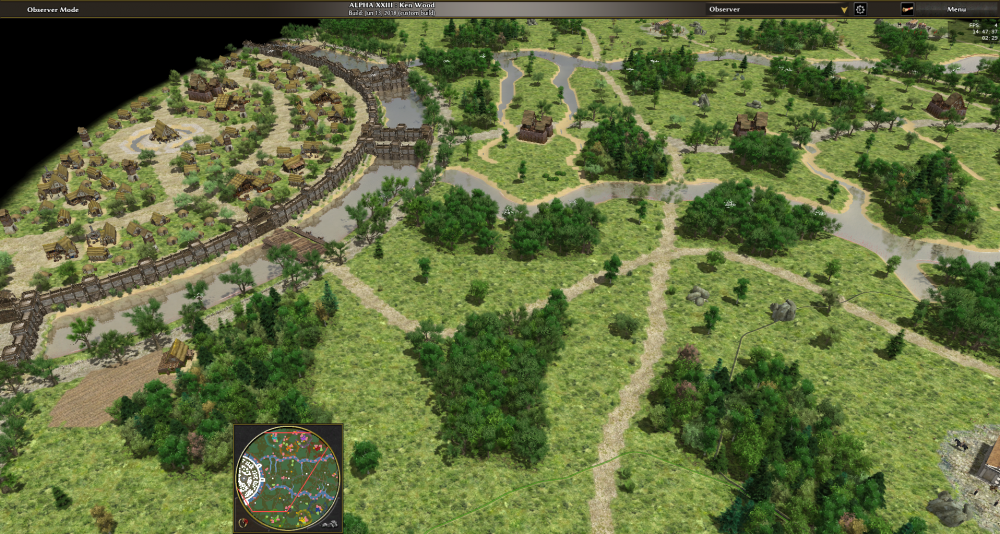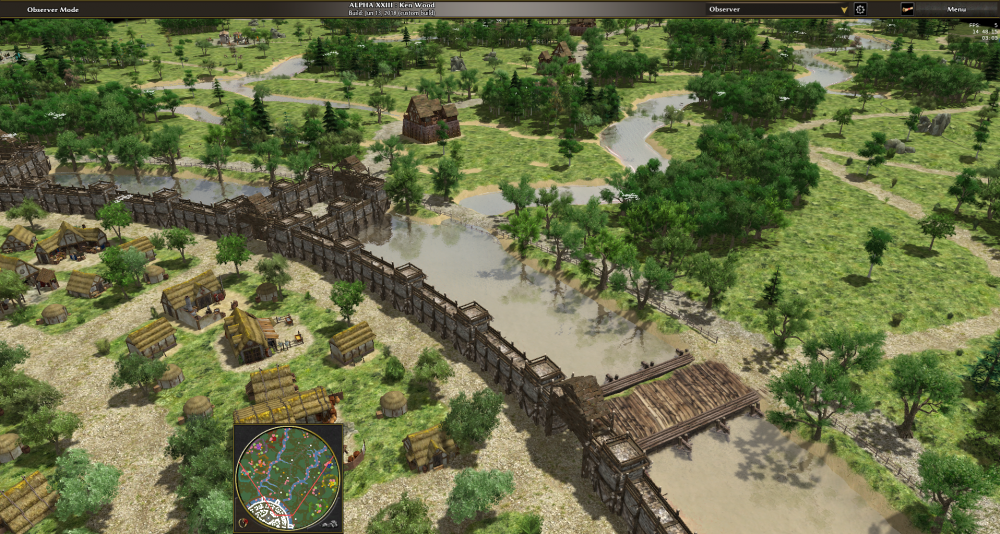Leaderboard
Popular Content
Showing content with the highest reputation on 2018-07-13 in all areas
-
Actually, it doesn't make any sense either. Catalan is mostly from latin origins (Occitan languages). Iberian language is for the moment unclassified and there is still debate to know if it is a indo-european language or not. There is a hypothesis relating the iberian language to the basque: https://es.wikipedia.org/wiki/Vascoiberismo But for the moment, nothing is conclusive.3 points
-
3 points
-
The purpose of this topic is to show in a simple and basic way how to improve your skills in 0a.d with 20 simple tips. 1- SHIFT button. Extremely important, mainly for order of buildings and micro. for example when picking up some wood collectors to build a house, hold the SHIFT button and right click on the house and then again on the wood, so immediately after finishing the house, they will automatically collect wood again. Your enemy is dancing in front of you, and your units missing shots, then select your units, hold SHIFT button, and select the stopped units you want to hit, so after killing the first selected enemy unit, they will fire in the next, avoiding that you shoot the dancer. You have selected 40 units, and you need to select more, keep SHIFT Button press, and select the 15 units, so you have 55 units selected. If you have enough wood and want to build 10 houses, keep SHIFT pressed, select the house and click 10 times in map. SHIFT greatly facilitates the construction of walls (make a test). 2- CTRL button: mainly required to select units. Let's imagine that you have 10 archers, 10 lancers and 10 women, you select them all, then in their interface show 3 small squares in the center with 10 archers, 10 lancers and 10 women. If you hold CTRL Buttom and click on the square of the 10 women, then you take the 10 women out of the selection, stay only 10 archers and 10 lancers, its is very important especially when suffering from harassment. CTRL button is also a shortcut key for storing units in buildings. Select the units, keep CTRL button press, and right click on the building. 3- U buttom. Shortcut button so that the units exit from within the buildings. 4- Two left mouse click. Press two left-clicks on mouse on archers for example, then all archers in your sight will be selected. 5- H button. Your units attacked the nearest unit. 6- Dance: the units automatically attack the nearest units, then select a unit and send it to the front, then click with it from side to side, you can use the SHIFT for this. 7- Storage. Must be made as close just to wood, fruit and hunting as possible. Metal and stone must have a distance that fits the units between the metal/stone to the storage. Doing too close will make your units have to walk a unnecessary distance. If necessary, make two or three. As your wood is cut make new Storages. When there is enough space for a new storage. 8- Outpost: Vision wins game, simple as that. Have vision so you will not have any more surprises. 9- keep some women close to the men, so that the collect gain 10%. 10- Tips for using with CTRL and U. I'll use an example that I only use at the moment (I did not see anyone else use until then). you are playing with iberians, and you are collecting outside the walls, so your enemy attacks you with some horses, you have no way to defend, and the gates are too far for you to run, what do you do? Select your units, press CTRL and click for units to enter the tower of the walls, then quickly click the U button several times so that the units exit quickly (Do not forget to select for the tower to unload the units inside the city). The same can be done with several types of constructions, in several occasions, use your imagination. 11- manipulation of animals: some animals can be manipulated in your favor. If the animal is too far from its storage or CC, hit him, and continues to walk behind it (no more hits), this will take the animal to the desired location. Walruses are aggressive animals, so if you hit a shot at him, they will go after you. then it is important that you select a unit and walk on the map giving a one hit on each,(preference ranges unit) and then send your unit back to your city, all walruses will follow. 12- Buildings within the radius of attack of the CC. An important tip especially for the beginning of the game, keep your houses and other possible constructions within reach of your CC, if your enemy rush you, he probably could not convert his constructions (If this happens, you probably lost the game). 13- Avoid fighting within range of towers and castles. Just fight if it's in your favor, if that does not happen, fight in another region, or make small attacks in multiple places at once. This is a regular mistake among beginners. 14- Whenever possible, make economic upgrades. Serious error between beginners and good players too, and plsssss, baskets upgrade are very, very important, basically you reduce 50% of walking time (first upgrade). 15- In fights whenever possible have melee/tank units on the front. Has already been proven in several tests that melee + ranged can win fights vs only ranged (Of course this depends on several factors). 16- Use constructs like houses/barracks to reach some resources beyond the edge. 17- keep in mind some basic things about factions / units. You are playing on Mauryans and your enemy is Romans, you do not know what strategy he used, but you should avoid some. Example, If he is a smart player it is likely that he will use spear horses against you for the simple fact that archers can not stop them, so what should you do? Make some lancers instead of archers, this will block it. 18- Preferably to armor upgrades rather than attack. Armor upgrades are cheaper, and reach more soldiers than attack upgrades. 1350 for +1 armor for melee and ranges units or 1500 for 20% attack only ranges units? 19- Balance eco. This is the most mistake among all players. Try to keep your economy always balanced and in progress. If you are collecting fruits, and they are running out, do not expect them to end up for making some farms, make before. If you are going to attack/defense, do not use all your units of a particular resource, only in special harassment and specific strategies. This will cause your economy to stop, you will have to switch resources, and this will see a snowball. 20 -keep an eye on the time. Minutes are important so you knew how well or how bad it is going. For me, for example, I know that if I'm in the minute 14 and I'm still in phase 2 in a game without major problems, I'm late, If I am playing against a good player, I can be in serious trouble. Maybe I even have a larger population, but if it has some rams or elephants, this can complicate me. I memorized some schedules, this facilitates my games, I know when to attack, pass phase, and i also know when the enemy probably attacked me in a probable rush. Well there are several other tips, but I hope that in a simple way I can help raise the level of the gameplay. Tips from other players are very welcome.2 points
-
Is it okay to post my own videos here? I think this one is exciting so I want to show you fast! Also I want to mention how apparent the lack of a scaling mechanism becomes when playing at 4k. I think this is the first true 4k 0 A.D. video on youtube? The game looks amazing in 4k, I had some transcoding problems which caused some sparkling when the frame info changes too much, next time I will try to upload uncompressed if my internet will take it. I think the game loses extra frames when units are selected, and gains frames when units are deselected? I hope you have a nice day. (Edit: I have erred, I had forgotten to mention the extent of my appreciation for the community members who have posted my youtube videos to this thread. Thank you, I greatly appreciate it. I know you guys are basically just adding literally every single 0 A.D. video that gets posted to youtube, but that does not give me cause to appreciate it any less. We all appreciate it greatly.)2 points
-
I spent last 2 of my evening on the implementing of the addition light system in the pyrogenesis to find implementing bottlenecks for new objects. And I found some places, but that's not the topic. How additional lighting system looks: Fully dynamic lighting. And all light sources can be attached as props (i.e. to bones): "May the Light be with you..." But what restrictions do we have? We have 2 main: The lights can't throw shadows, because performance (we can implement it, but only few powerful videocards can handle it). There can't be many light sources in one place (at least for low videocards and since we don't support deferred rendering). Because shaders have own restrictions, particularly uniform sizes. But probably it's not the real problem. So I have a question: do we need additional light sources in near releases? Would it be real useful? P.S. I found strange normal values for some model, it should be investigated (probably the shader problem).1 point
-
(TRADUCCIÓN EN CASTELLANO EN EL SIGUIENTE POST) Hello! I love this game. I've been playing it for years! But I still do not understand why in the game the Iberian culture seems the culture of the beggars, apart from the historical-artistic inaccuracies that it has. I have to understand that there is a lack of knowledge about this culture and as a scholar in the subject that I am, I would like to offer you a realistic view of it. In this first post, I want to talk a little about the cultures that were in the peninsula and take advantage to remark something that I find so disconcerting, as when Quentin Tarantino confuses Spanish culture with Mexican culture and puts the Mexicans singing flamenco in their films, and it is the language that has been put to the Iberians in the game: the vascon or euskera. In the Iberian Peninsula we have several cultures that could be classified in the following macro-cultures: Celts, who occupied the northwest widely also occupying the interior, these Celts could be divided into 2: The Celtic coast, more ¿fully? (Galaicos and Astures ...) And the Celts of Interior with more particularities (Cantabrians, Vaceans, Celtics and Carpetans / Who could almost form their own group /) Lusitanians, who are also classified as Celts but have a markedly differentiated culture and also linked with the Vettones. Turdetanians / Tartesic, that occupy the south of the peninsula. There are many discussions to classify this culture since the area was a heap and meeting of cultures. Let's leave it there. Celtiberians, who occupied the interior of the peninsula, and as its etymology indicates Iberian and Celtic features. Iberians, who occupied the Mediterranean coast. Can be classified in two: Iberian Levantine, located on the east coast and more linked with the Mediterranean Sea. Iberian Betic, located in the southern region and more linked specifically with the "Sistema Bético" (Some mountains in the southeast). Basques, who occupied a small region on the Cantabrian coast to the north, being a "locked in itself" and isolated town. Curiously at present, the regions occupied by these peoples correspond (more or less) with regions, which have characteristics of ethnography and folklore, and even of language and accent. Celts: Coast: Galicia, Asturias. || Interior: Cantabria, Castilla y León, Castilla la Mancha. Lusitanians: Portugal || Vettones: Extremadura. Turdetanians / Tartesic: Western Andalusia. Celtiberians: Aragón (Fully addition) Iberians: Levantines: Catalonia and Valencia. || Betics: Murcia and Eastern Andalusia. Basques: Basque Country, La Rioja and Navarra. (The latter more gently) The Iberians spoke Iberian and it is true that we do not have a clear dictionary of this language but with a glance to understand that the Iberian culture has little to do with the Basque culture. In fact, in the area occupied by the ancient Basques, Euskera is still spoken, a language that has absolutely nothing to do with Romance languages related to Latin, in fact studies suggest that it is related to the Aquitano spoken in the south of France and the Pyrenees; While in the area that formerly occupied the Iberian people, and that is why I have highlighted the text, a language is spoken, plus a dialect of it, called Catalan. Which makes it more likely by logic, that the Catalan is more linked to the Iberian than the Basque, and therefore the Catalan should be the language they must have in the game. (See a political map of Spain and check it)1 point
-
*attached pdf has better table formatting*, same content Intro: A friend and I have been casually playing 0AD for a number of months and have been enchanted with the gameplay, graphics, and amazing sense of community and co-creation that has come together to create this project. In this spirit, we'd like to offer these suggestions of how the gameplay could be subtly improved in a few ways. In a nutshell they involve user/Gaia interactions, resource gathering, and civ-specific agro-economy models and techs. simple modifications to user/Gaia interactions simple modifications to agriculture structure and research names call for diversification of Gaia plant and animal food sources call for civ-specific diversification of agriculture structures and techs IRL, our work in life is nature and ecology education and research at local public schools and universities, and non-profit management focused on public fruit and berry growing - so you can see the focus of our inputs ;). This is our first post on the forums, and we're hoping we landed in the right place. More connected members of the dev team are welcome to dissect this list if inspired and cross post where most applicable. Rationale: Any societies' agriculture, economy, and military were and are inseparable, past and present. . In a sense, armies were, and are extensions of a culture's farms, far removed. In addition to nutrition and calories and energy literally fueling societies during peace and war, farms furnished many, almost all, of the material goods used in the economy, with the exception of quarried rock and forest-cut wood. Materials like leather, insulation (wool, flax), cloth, dyes, fibers, solvents, adhesives, medicines, preservatives, small diameter wood, oils, paints, poisons, and more all are first grown on farms, and often processed nearby. While 0AD largely focuses on military conquest, a little bit of tweaking, even just of the names of farming units and structures in the game, will go a long way to honor the importance of agriculture in all aspects of history, show the dynamic and unique nature of different societies' forms of farming, and possibly educate and inspire players. Without further ado, here are our suggestions. 1. Suggested increase of diversity of berry/nut bushes, fruit/nut trees: In a game striving for historical accuracy, and with a fair diversity of tree models (and countless accurately rendered civ-specific warrior models) there should be more diversity and accuracy in the berry patches. With ancient Carthaginian names for fishing boats (which is awesome), merely one "Berry bush" feels out of place and too simple. Easy and basic modifications of the existing berry bush model would suffice for most of these, or at minimum, just name changes of the same model, differentiated across for tile-sets. Biome: temperate (temp), northern (north), southern Europe (s.eur), south Asia (s.asia), arid (arid), Mediterranean (med). Appearance indicates how the berry bush model might be easily modified. Name Biome Appearance berry bush model mods: bilberry temp, north blue, small berries (like a blueberry) blackberry temp, s.eur, med shorter bush, silvery foliage, small black berries aronia temp, north darker green foliage, dark purple berries elderberry temp, north tall bush, light green foliage, clusters small black fruit gooseberry temp, north, s.eur, med , arid red, small berries black currants temp, north, s.eur black, small berries sea berry med, arid, s.asia orange, small berries, dark green/silver leaves sloe plum north, temp purple, small fruit, dark leaves pomegranate arid, s. eur , s. asia, med tall berry bush, darker foliage, larger red fruits hazelnut temp, north tall bush, darker foliage, brown nuts in light green husks fruit trees that could use the apple tree model, modified: rowan temp, north apple tree with darker foliage, clusters of orange fruit hawthorne temp, north apple tree with darker foliage, dark red fruit medlar s. eur, med smaller apple tree with darker foliage, dark orange fruit quince temp, s.eur, med smaller apple tree with light foliage, yellow fruit almond arid, s. euro, med, s. asia short tree, small green/yellow fruit with 1 brown stripe apricot arid, s. euro, med, s. asia short tree, orange fruit (same model as above) wild pear all but arid medium tree, dark green glossy leaves, orange grn fruit cherry north, temp, , s.euro medium tree, dark leaves, purple red small fruit persimmon s. asia, med, s. euro med tall, thin tree, drk grn leaf, large orng. fruit, blk bark mango South Asia taller apple tree with glossy dark leaves, orange fruit citrus (lemon?) s. asia, med, s.euro, arid apple tree with glossy dark leaves, orange/yellow fruit mulberry all maps med size, wide tree with y/g leaves, y/br bark blk fruit jujube S. asia, arid med tree red small olive like fruit pistachio S. asia, arid med tree, beige small olive like fruit, tan bark other models: morel temp, s. europe small patch of mushrooms (low, grey/brown) chestnut temp, s. eur, north med tree, dark green leaves, bright gr husks, brown nuts walnut temp, s. euro, central asia tall tree, green long leaves, bright gr husks sugar apple S. asia medium cone shaped tree, large leaves, large green fruit tamarind S. asia, arid tall tree (use tamarisk model), long dark beans. 2. Dry land, non-fruit, food gathering patches: In addition to fruit, many wild tubers and greens played an enormous, supportive role in the peasant farm economy, on all continents, in all time periods from pre-history to the present day. From a caloric sense, wild starches were often gathered in excess of wild fruits, so we feel they should be represented. Name Biome Appearance wild yam South Asia pile of vines, glossy heart shaped dark leaves, ylw roots burdock Temperate upright herb, broad dark leaves w silver underside nettle all (non-arid) patch of upright, dark green thin herbs with little spikes camas Temperate waist high grass looking patches w flowers, onion bulbs orchid tuber Arid small, thick grass, small pink flowers sea kale temperate, northern small cabbages, grows near shore, not in water wild melon Africa, Arid, Med small pumpkin patch, orange 3. Wetland (shore and shallow water) food resources Wetlands (freshwater), habitats are especially productive, and were long used as sources of starches and greens, at all times of year including the winter, when the ground was usually frozen elsewhere. All players of 0AD regardless of nationality are descended from peoples who made use of wetlands plants as food, even up through the late middle ages. These shore or shallow waters based Gaia/flora models could be "patch" sized food gathering resources for villagers, accessible from shore, as well as fishing boats (though their maximum water depth for growth should be about what people can walk in, maybe a little deeper.) They could all have as much food as a berry bush for simplicity's sake, but having a choice and more meager option for each biome might be of interest and additional learning value. The plant-based wetland foods and shellfish could use same animation as berry picking. Is there a fishing animation for civ. soldiers and women? Maybe these foods could be deposited at a dock, for convenience? Name Biome Appearance cattails temp, north, south tall grass in water with wider leaves, cattail fruits bullrush Temperate, arid tall grass in water with brown thin seeds at top water lotus South Asia large round leaves, white lotus flowers on stalks pond lily Temp, south, north floating round leaves, yellow floating lotus flowers Shallow-water, shore based catchable freshwater fish: catfish Temperate Larger (football) fish with whiskers, dark color eels all Longer, snake like fish, writing in rocks salmon Northern jumping fish in small channels? appear cyclicly? crawfish Southern, Asia Small, lobster like, with little mounds and holes frogs Temperate, S Asia, S Euro lil' frogs, maybe a cattail or too and some eggs? waterfowl All ducks, geese, nests with eggs, ducklings Saltwater* mussel bed Temperate, northern dark blue, oval shells on rocks clam bed South Asia, Med. white round shells on sand, holes, small circling gulls? seaweed (laver) northern, temperate rocks under/above water leaves seaweed (sea lettuce) temperate, south europe green seabird colony All gulls, cormorants with nests, eggs *not sure how to indicate salt vs. freshwater in the map generation... would have to maybe be assigned to land tile beneath it? I'd say randomly generated placement on procedural maps would be fine, users can place their own if they want on custom maps. 4. Proposed villager/fishing-boat built structure - fish trap - a la Age of Empires II: Used historically, and almost universally. Maybe could be built by villagers on shoreline, (like dock), but might clutter villager build UI. Could also be built by a fishing boat. Costs some wood, yields food, takes 1-5 workers like a farm or bush. Maybe a dock research in phase 2/3? Capture-able? Useable by all boats (enemy or allied?) See: http://ageofempires.wikia.com/wiki/Fish_Trap 5. Proposed food from existing tree models that presently only yield lumber: IRL, these trees produce food and are (and were historically) as useful in orchards or wild sources of food as they were for lumber throughout history. Some are heavy producers, others have sparse harvests. Based on our understanding of production of these species, and measuring against the existing amounts of food offered by in game resources, we suggest the following food availability for these lumber trees. Additionally, some food producing trees should also yield a little wood when harvested out. However, there would need to be a seamless way for the player to decide (or not) which resource to harvest. Solutions include: villager preset (has toggle, like military formations for preferences) auto gather whichever you have less of (could be example of above preset) get all the food fist, then the wood get all the wood, then there is no food when mousing over the trees, you can pick those options in little pop-up villager gets both resources at the same time (but couldn't deliver food to the storehouse?) general preset for all workers at the storehouse or farmstead Tree list and proposed relative food amts: acacia -little food (150F) apple - little wood (or becomes an apple/lumber tree after food harvested) baobab - food (400F) carob - food (250F) date palms - food and wood (400F) beech - little nuts food (250F) fig / little food and wood (500F, 150W) oaks - food (research?) considerable, far more productive than farm fields (500-1kF) pine - little food (150F) toona - little food (150F) 5. General corrections and suggestions for Gaia units, names: Lack of consistency in name selection for Gaia/flora. Propose the following format: User region common name (Player-civ historical common name) Latin name (Gaia) Example (english language player playing as britons) (Spanish language player playing as britons) Oak tree (coden derw) Roble (coden derw) Quercus rubra (Gaia) Quercus rubra (Gea) Tamarix is scientific (Latin) name, Tamarisk is English (Gaia/flora) musk-oxen are a New World species, and in recent years have been introduced to Eurasia only in Scandinavia. Not sure if they feature in historic campaigns. If they're in a randomly generated terrain (northern) with ancient civs... not such a big deal IMO. The following Gaia fauna (carnivores) should be available as a food resource. While not historically staples, they were certainly used in times of war or famine (such as the conditions of the entire game). Could get civ-specific for who could have broader diets, might be a fun small bonus for some civs (Mongols, later romans (feasts), Kushites, etc... but would be easier to implement edibility across the board and let players take the risk to fight them.) Fox 20 Wolf 30 Croc 150 Historically eaten by ancient Egyptians (also revered). Shark 200 Lion 150 Tiger 150 etc.. Gaia interactions: Simple AI with carnivores hunting herbivores. Should be rare and not cut into the resources but would be fun and immersive and compelling to witness. Herbivores breeding every so often... would have to have local population limits (like maybe the deer population raises by 10% a minute (doubling every ~10 min), reaches a cap of 30 (random idea, but not to high so doesn't lag or overrun the map). Or, easier, theres a random (low chance) that every few minutes a deer spawns near some a group of 2+ deer. Or something. Suggested Gaia adds: (new fauna units) geese and ducks (same model, geese paler and bigger). Food value ~ 50 lives on the shore. caribou (new world) / reindeer (eurasia) - tamable, as deer/sheep Crows (small black Gaia/fauna/hawk), come to dead hunted animals and war dead...? Peck around? Would be cool to see. Also vultures! Could just be part of the unit death / decay animation for simplicity... but might need to be randomly present, so they all don't show up at the same time and look like clones. Not sure how to do that. Fun ideas: Wild asian elephant tamable by Mauryan, that become worker elephants 6. Potential lumber trees to add to the Gaia/flora palette, of historic and cultural significance: These trees are currently missing from the palette, and would need new/tweaked models. Temperate climate: maple, ash, willow, birch, alder Mediterranean: cedar of Lebanon, myrrh, hackberry (Lotus tree of the Iliad) Arid: mahogany, dragon blood tree (dracaena cinnabari), tamarind, ghaf tree, wild olive, myrrh South Asia: banyan, bamboo, jujube, mango, she-oak, neem, sacred fig 7. Civ specific ecological/other structures/upgrades: These played significant roles in these societies. These would take much more modeling and game balancing, but we thought we'd suggest for fun. Britons, Gauls (others?) - a druid (or maybe takes a few at once) can plant a sacred grove (Oaks used historically for this) (X wood, stone?). Starts an oak tree -- might need a building / growing animation. Maybe has to be built ON existing trees? Has aura of effect healing speed increase? maybe vastly increases the healer's POV vision while they're standing next to it? Maybe generates deer slowly? If you sacrifice sheep there.... *insert fun effect* insta-heals 500hp (or whatever feels balanced) within the small radius, to the lowest HP units first? https://en.wikipedia.org/wiki/Sacred_grove Coracle - Briton specific small, circular, portable, wheelbarrow sized boat. Developed interdependently by the Indians/Mauryans as well, today called haragōlu (Crab boat)). Built WITHOUT a dock, by citizens and citizen soldiers. Research at dock. Was used at the time of Cesar in Wales and the UK/Ireland. He noted them, and used them in his own Campaign in Ireland (so maybe some Roman soldiers could get them later, likewise with an upgrade (maybe at the military outpost, not dock), could not find a specific Roman military name for them, Latin for coracle is coracle). Builds fast (10-25 sec), costs 20-50, can be fished from or transport, and can be carried? Moves slowly. https://en.wikipedia.org/wiki/Coracle https://en.wikipedia.org/wiki/Coracle Qanat Used historically and I believe presently in Iran. For Selucids, maybe Ptolemies? Place near farms, akin to rotary mill, maybe worker has to build a water entrance at nearby highlands just for fun, or user clicks to identify or... just forget about that. these are basically highly efficient underground aqueducts for irrigation, still in use in Iran. Could be a research at storehouse, or farm field if not a full structure, but their architecture was beautiful, above and below ground. https://en.wikipedia.org/wiki/Qanat Cob structures/houses - Britons, Gauls, probably lots. Town phase research (at houses?). decrease house and economic structures cost by 1 or speed (maybe if worked on in groups) I don't know enough about the rest of the civs to propose others. 8. Suggested mechanic for wild (plant) food harvesting, fish: The following could be a research, below, at the farmhouse, rather than a engine-wide mechanic. I think that would be easier. The in-game agro-economy offers, and reinforces, player concepts of how humans interact with the ecosystem. All too often in resource based RTS games, this is a consume-and-move-on paradigm. While this encourages expansion for in game conquest, it's not totally historically accurate, and paints a too-simple picture of human/ecology relationships. The fact is, that picking berries does not destroy a bush. People know that 200,000 years ago, and people know that today. In fact, people historically often chose to relate to berry patches in ways that PROMOTED the regrowth of the food plants. Some mechanic options are: Easy mechanic: Berry bushes, trees, fish slowly regenerate food (full bush takes ~5 minutes? long enough to encourage expansion as usual, but fast enough to eventually come back to.). If the available food reaches 0, the bushes die, representing unsustainable and irresponsible harvest. If you stop while they have some amount of food, they will survive and keep regenerating until full and you return to keep harvesting. Research option: Storehouse had a research (town phase?), wildcrafting that would automatically de-allocate foraging villagers when the patch was low: applies to bushes, shellfish, maybe not fish patches without an additional research. These would then have to be allowed to slowly grow back. Alternatively, berry bushes would NOT regenerate UNTIL you had researched wildcrafting. Wildcrafting could also allow women to plant berry bushes, fruit trees (random palette selection) anywhere, (within radius of existing berry bushes), for x wood /ea? 9. Storehouse technologies: Billhooks - basically hooked axes/knives for harvesting small wood. Used in self defense by peasants, and as weapons when levied into war. Developed on a long handle to "prune" limbs, and became the halberd. Maybe villagers that are harvesting wood get +X attack? Or all villagers do, for simplicity? Plus, they look awesome! https://en.wikipedia.org/wiki/Billhook#Military_use Propose these upgrades get renamed for more historic detail and accuracy: Stronger Axe -> Hewing Axes (more specific) (or billhooks, above) Sharp Axe Heads -> Grinding Wheel (even iron axes were sharp). Baskets -> Pack Baskets (presently redundant with wicker baskets, and baskets have been around (pre scope of this game), for many 1000s of years, so "researching" them around 0ad seems strange. https://en.wikipedia.org/wiki/Basket#History Coppice forestry (costs TBD) (research in phase 1 or 2) Coppice is a universally practiced, historic and present human wood gathering technology in which trees are cut in cycles, and each tree has a change to regrow over decades (or lower time frames) from multiple stumps. While some empires blatantly deforested the land, many gathered wood in a somewhat sustainable manner. While the need for active expansion in 0AD driven by wood depletion is part of the gameplay, coppicing was very fundamental to past (and present) local economies of any scale (village - empire), and I think should be represented in this game - not just for historical accuracy, but to offer a teaching tool to players, and to introduce players to this concept which has modern day implications. Here are some suggestions about how it might work. If a worker(s) is gathering wood, and the tree HP (wood qty) is hits 20, the workers are auto- reallocated to nearby trees. The tree dies, spawns a species specific (or even generic) coppice stump in its place. This stump starts with 20 wood, which could be harvested in an emergency, but regrow wood/HP to it's maximum (let's say 200) over 5 minutes, with the same feature - when it gets to 20 (or 0), the workers reallocate to nearby trees - either whole trees or coppice trees over ~50 or 100 HP, giving them some time to recharge. There would be a need for an associated build animation for the coppice tree - growing as a stump with sprouts that finally become multiple, vertical thinner trunks. For the sake of easiness, maybe all trees re spawn as the coppice tree (same model), despite their original species. However, not all trees can be coppiced - evergreens cannot. Unlocks woodlot management (below). Or, more simply, below: Woodlot management - available in the city phase. Lets civilians build a woodlot (or copse) (structure akin to a farm field, looks like lotsa stumps that grow to trees), about 5 coppice trees close together in a clump. The research costs wood, food, metal, the woodlots themselves cost wood and metal, stone, whatever. This could have to be built OVER (or UNDER?) existing trees, stumps, or just fields., but would be gather able, as is food, in a sustainable, somewhat endless way like a farm field. The # of workers per woodlot could be tweaked, or their rate of gathering. Maybe then you have to harvest the original trees, then you get the woodlot. Maybe the woodlots have infinite wood, maybe they have 1000, 2000, etc. or maybe you'd need to let them rest somehow. https://en.wikipedia.org/wiki/Coppicing 10. Farm field renames: Not all these factions consumed the same staples. While "Field" is generic, having the species (here simplified - many cultures consumed many grains, vegetables, etc), listed int he name increases the learning and immersion for the player. Tinting the color of the field to various browns would also be a nice touch. Civ Field Civ name Athenians Barley field Britons Spelt field Carthaginians Wheat field Gauls Spelt field Iberians Wheat field Macedonians Wheat field Mauryans Rice field Persians Barley field Ptolemies Barley field Kushites Millet field Romans Wheat field Seleucids Wheat field 11. Farmstead Technologies (researchable): Nut processing (nuts) - lets you get food from (oak, beech, chestnut, almond, (italic not in game atm). Simple solution is that it turns the above models into food versions (replacing lumber versions) for the researched player. Simpler still is that all civilizations have this ability to begin with, it's not an upgrade, but these tree models produce food and players have the choice. More complex is that player has a choice of resource. If choosing food/wood (in the GUI) feels to much work and might slow gameplay a little, maybe the default could be getting wood, and a hovered mouse over over the trees will pop up a food option. Wildcrafting (lets women replant berry patches, or not exhaust them when they get to zero food but they (very?) slowly come back?) Herbalism - slightly increase women hit points (5-10?), walking speed, and add healing radius (slow hp/s for around women and certain units - like maybe villagers and citizens soldiers? maybe if near a house too?). Or maybe is like battlefield medicine, but ALL units regenerate a little bit more? Hedgerow - played a critical role in the home economy of peasant farmers across history. Basically quasi-wild but cultivated strips of bushes and trees between farm plots, full of bushes with food, medicine, nutrition, fiber, useful fuel and more. Suggested here as a farmhouse, phase 2 upgrade available to all non-arid civs, that unlocks a build able structure, the hedgerow. built by citizens like a palisade, 4 or 5 units long. passable, but briefly slow movement through them for foot units, slow cavalry less, can't stop siege. can be destroyed., lower HP than palisades. however, can gather some amount of food off of them. can only be built along the edge of a farm. Or built on farms/adjacent to farms, (add ons), like the nuke silo to the Terran CC in StarCraft. Not sure if the farm or villager would do the building. Maybe, more simply, any farm could research "Add hedgerow", (the way that towers can upgrade to defense towers), and it would allow another 1-2 workers to farm there, and change the model to have a few bushes along the edge (or not). This way it doesn't deal with it as a defensive structure. 12. Propose these upgrades get renamed for more historic detail, accuracy, and intrigue to player. Gather training -> Cover Crops or Crop Rotation (civ specific), propose icon is a seedling plant (could be same across the board), and have the name format: Cover Crops (Barley) or Crop Rotation (Barley). Alternatively: [civ historical name] ([Player language] cover crops), i.e. Shaftal (Barley Cover Crops). It may be easier NOT to include civ names for this for simplicity. Civ Cover Crop Historic name (incomplete list) Athenians Lentils Britons Winter rye Carthaginians Cowpea Gauls Winter wheat Iberians Barley Macedonians Spring oats Mauryans Mustard Persians Clover shaftal Ptolemies Lentils Kushites Sorghum Romans Chickpeas cicer Seleucids Sesamea Civ specific researches (names) for last tier (3) farming speed upgrade Fertilizer - > Rename to civ-specific final tier farming tech. Below are a more complete list of civ-specific, geographically unique and HIGHLY sophisticated agricultural technologies of antiquity (often still used to this day). This could change the name of all their fields to this specific type. Different models would be amazing, but recognized as being a design challenge. The upgrade could (easily) just be the additional % increase to food, but some careful scholarly research might uncover some interesting ways in which these profited the militaries (or economies) of the playable societies. This could give late game, economy specific, agriculture activated society wide upgrades, which would be very interesting to see. Alternatively, each civ could have a (different modeled) civ specific agriculture aura-enhancement building, like rotary mill, that can upgrade farms in the vicinity (or map-wide) Civ tech (english) Civ specific name Athenians olive press Britons chalk fertilizer Carthaginians Seasonal herding Gauls Sprouted einkorn Iberians Pig-oak silvipasture Dehesa Macedonians vineyards Mauryans Fair farming administration Kumara Persians Qanat irrigation Ptolemies Cotton cultivation Kushites Tilapia Aquaculture Romans (Republican) Master beekeeping Seleucids Long distance herding If all this sounds too much, Fertilizer could become Fertilizer (X) or X Fertilizer, as below, using a regionally specific source of the resource. That option is listed below, is recognizable across playable civs, and honors the differences between these societies modes of farming. Athenians Fertilizer (Charcoal) Britons Fertilizer (Chalk) Carthaginians Fertilizer (Reed mulch) Gauls Fertilizer (Oat straw) Iberians Fertilizer (Pig manure) Macedonians Fertilizer (Leaf mulch) Mauryans Fertilizer (Cow manure) Persians Fertilizer (Wheat chaff) Ptolemies Fertilizer (Cow manure) Kushites Fertilizer (Reed mulch) Romans Fertilizer (Cow manure) Seleucids Fertilizer (Barley chaff) 13. Corral - tech and trainable livestock: Poultry: geese, peahens, guinea fowl, ducks, chickens, made in batches of 5? (Maybe just "poultry", and it's civ specific: Geese for northern/central europe, ducks for western europe, chickens for mediterranean, guinea fowl kushites, pea hens /cocks for western/south Asian factions and high Romans. Or random. Maybe 1-20 poultry can be garrisoned IN the corral, which women can get eggs from (maybe 5? less? people can gather at a time, rate of replenishment or amt of women able to gather depends on amount of garrisoned poultry, each of which cost food one time). Would be similar production to a farm, but less space, and could cost more food than farm wood to earn for that benefit. Cattle: cows, water buffalo, zebu Horses: eaten by some cultures, include donkeys A quick survey of the in-team historians should yield which civs get which livestock. Maybe they all just get one? Or maybe in city phase, the price drops on cows, etc, and they have a better pay-off? Or maybe animal food cost drops by 1 for each farm field you have? Pigs: Iberians, Romans Carthage, Selucids, Persians, Ptolemies: Camels, goats Corral features auto-train (on loop) single/batch livestock to workers nearby harvesting meat. Maybe stops the auto-cue when food is low and during alerts? Maybe made when workers are harvesting it but it's the last one dies? (This can be toggled on/off) livestock reproduce over time (if 5? or more, and are idle long enough) sheep can be tamed by women, as in, can follow them back to the farmstead for easy meat shuttling a la Age of Kings. Sheep, goats, cows, camels, can be milked (one woman per cow/sheep). Does not kill it but allows for continuous, albeit slower production. research "dairy / stanchions / milking stool" or something like that at the corral. This option (cursor / mouse over) would have to be elected by the villager when selecting the sheep. 14. Possible Kennel researches for increased dog utility herding - allows dogs to go roaming for meat to chase (have livestock or game follow the dog) back to the kennel, or dog brings it back to a corral or farmstead. retrieving - dog explores map, looking for poultry, kills, brings back. hunting dogs - follow horsemen to hunt, increase qty of meat yielded from the carcass, or makes deer or geese, etc, spawn randomly at times near the hunters ("flushed" out of the bush) morale - units with dogs have "morale" higher --- faster healing rate? 15. Artistic suggestions for some Gaia units / icons: Mushrooms - should be bigger, or have shadows around them to stand out in landscape. Larger oaks, pines. Should not be same size as palm, but twice as big. Toona tree needs more red leaves, for tropical (S. Asian biome only). Rhino has bear for icon pic, has badger head. species specific fish icons missing 16. General game / scenario editor suggestions: Have a tool in Scenario Editor that can paint flora (or units, for that matter) with a wider brush, and can be held down (spray paint style) Have "select unit" feature in Scenario Editor, to indicate name and maybe starting parameters for that model (or all copies of it) Have visible "elapsed time" counter in game replay mode (and possibly in active game modes) Have a test / launch map feature directly from Scenario Editor Flaming fauna animations (after burning pig contact) need some work, maybe not realistic that units catch fire and DoT from the pigs. possible able to have them rendered, could try to mod them as units but not my forte. would be fun, but... anyone interested in tagging in? Middens, like the treasure chests, and random item drops (trash mounds from prior cultures - stone, metal?), were historically used. camera angle changeable (if desired) from 45deg down to adjustable, including 90deg (towards horizon), or less, so that the ground isn't dis-oreientingly lost. Maybe also able to look straight down if desired. 0ad eco ideas.pdf1 point
-
1 point
-
1 point
-
@psypherium Have you tried to set gui.scale=1.5 in the user.cfg file located in your Appdata folder if you are using Windows ?1 point
-
So... Can we agree on this? I believe, if not, the ones that don't agree should try to formulate one or two new options for a more "objective" poll, and urge everyone to vote on it. I think the results of the original poll were quite telling though... I actually tried googling that...1 point
-
I cannot help a lot, I don't read Spanish easily and I don't have the books of Quesada Sanz, but here a document he wrote: https://www.uam.es/proyectosinv/equus/warmas/online/Guerra Iberia Quesada.pdf1 point
-
Creative Assembly has set the standard: "We've finally released the game" means "We need 4-5 more years of patching." Any game that goes beyond that won't cut it.1 point
-
Nice! Finally the game plays and looks like what it should have been at launch.1 point
-
1 point
-
1 point
-
1 point
-
It seems realistic that people would have connected nearby streams with their oppidum ditches if there wasn't a hill nearby. So it's not a representative oppidum, but a unique one. That's actually good (but for the next oppidum map, better no more water inside the oppidum). Step 16: Connect the two streams with the ditch. More space between bridges, more space between buildings, random building angles instead of alignment. Second row of oaks near the bridge path. Different grasslands textures.1 point
-
I think the problem is more that a mass of units automatically target the nearest enemy unit, instead of spreading their attack over a "front", targeting not only the nearest enemy unit, but also every other enemy within a certain radius of it. If that were possible, dancing units won't be a viable tactic anymore. Automatically reassigning units to the nearest target every couple of seconds could also mitigate the dancing unit tactic, as simply pressing the "halt" button regularly during battle greatly increases the effectiveness of your soldiers as they stop chasing people across the battlefield while taking hits and doing no damage in the process.1 point
-
Nice little guide, @borg-. Should help a lot of rookie players. This^ kind of thing I would really like the team to look into minimizing in the gameplay. I think these are the kinds of "tips" which are really exploits of poor unit behavior, things @Sundiata has lamented. Not a slam on you, borg, since players play with the game they are given, not what they wish it to be.1 point
-
Hmmm, that's a design flaw in the game that should be addressed in my opinion. Uhu... This is very true... People often forget that we, humans, are the apex predator. Every other animal fears us, including big predators. Man-eaters are exceedingly rare. Those tigers in the Sunderbans drink brackish water which might cause them to be a little insane... "Humans will always choose what they understand over what they do not. [...] The only animals left in this world are the ones who they subjugated, who curl at their feet, or those who learn to flee at the very sound of their approach. There’s nothing in between." - Ford, from Westworld But wild animals attacking is a fun gameplay feature, and isn't totally unrealistic (tigers of the Sunderbans, the Lions of Tsavo, rampaging elephants, A moose in heat, a macaque throwing feces...) I don't think it should be possible to put women in formation, because, you know, they're women... Only female military units should have formation options imo. ? !1 point
-
1 point
-
1 point

.thumb.jpg.b21ca1d0c15fb56b42c39b25a0a40815.jpg)

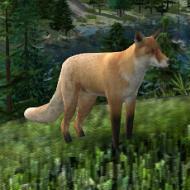

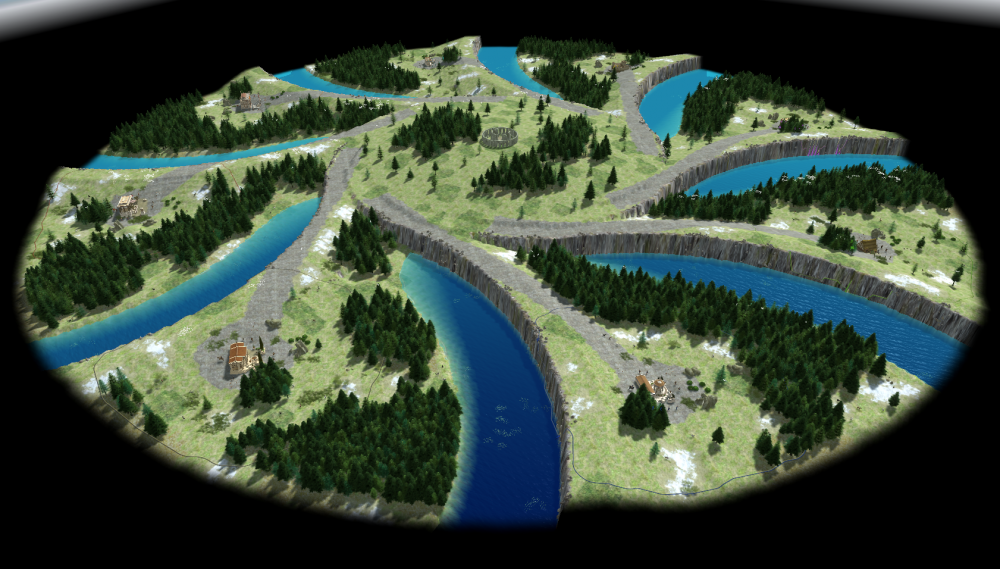
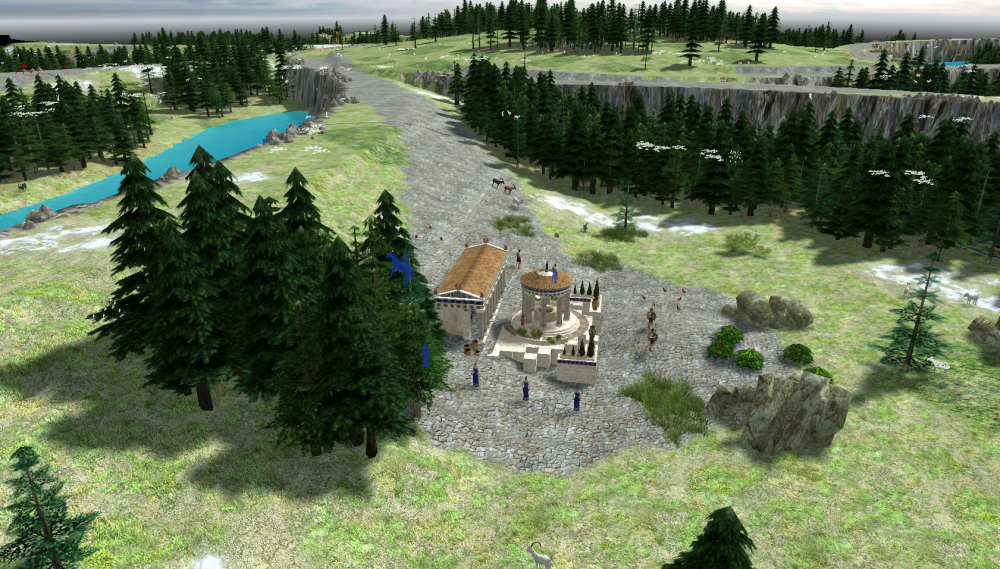
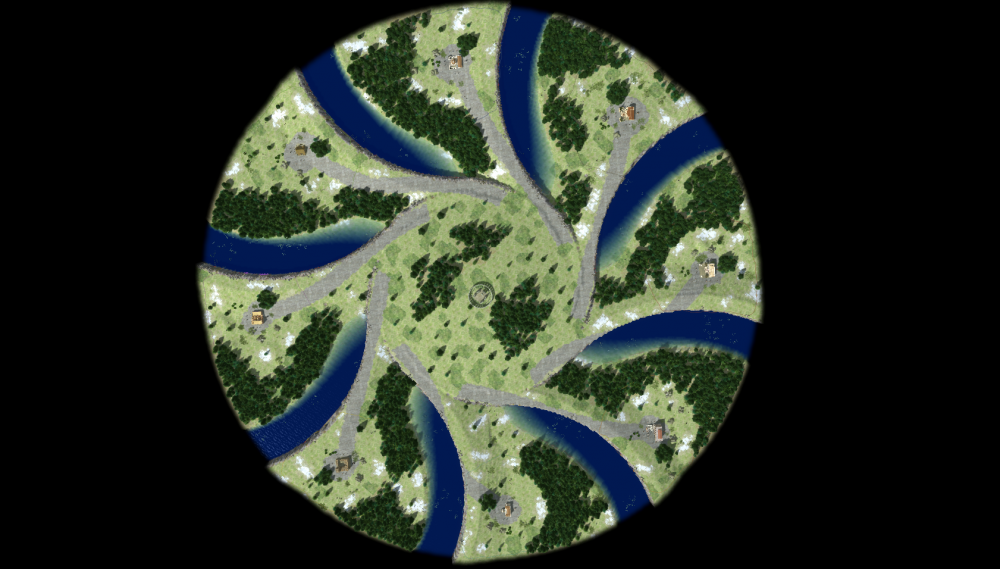
(1).thumb.gif.b5909d3df98a8ec15dc452423f219bc5.gif)

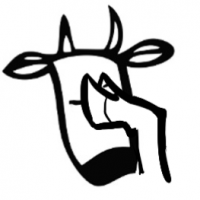
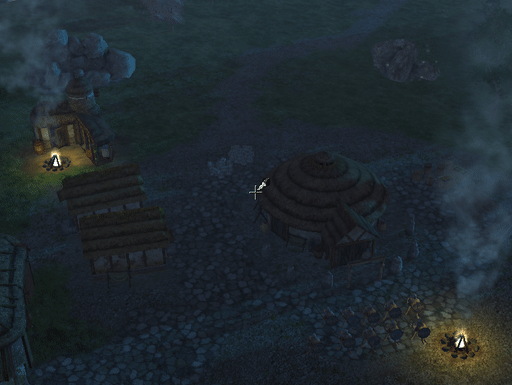
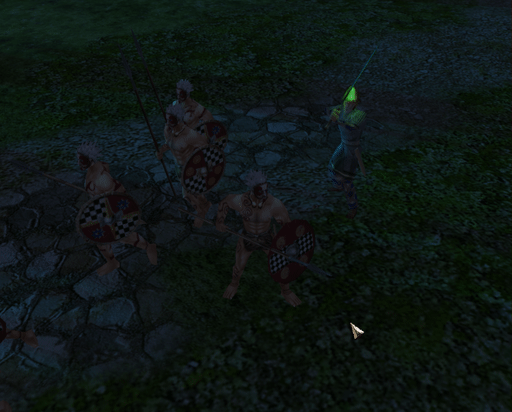

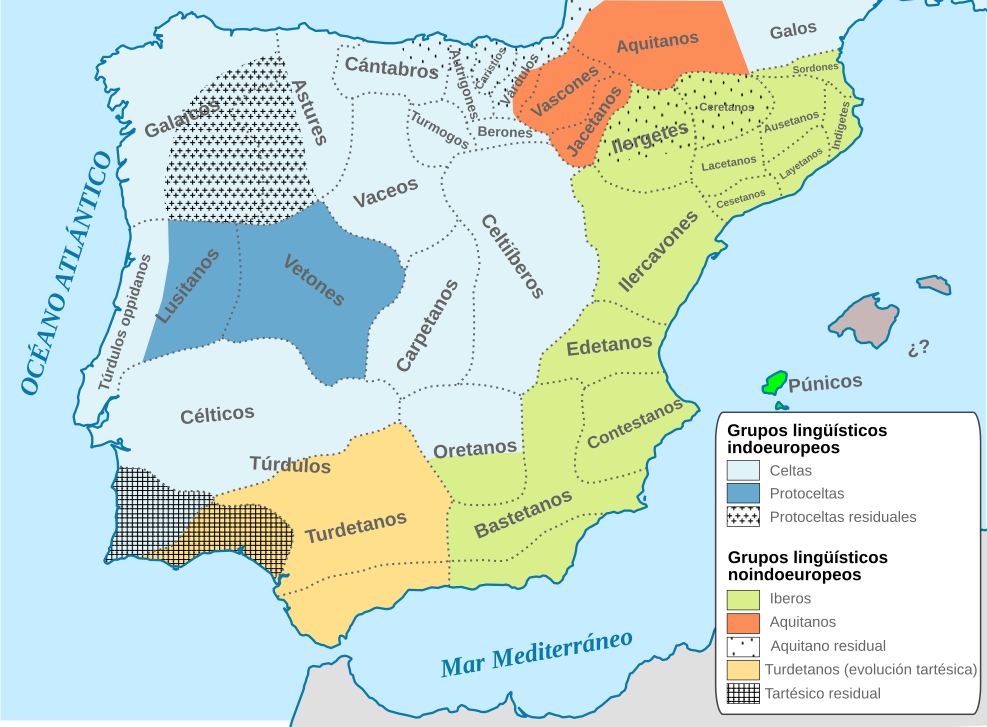
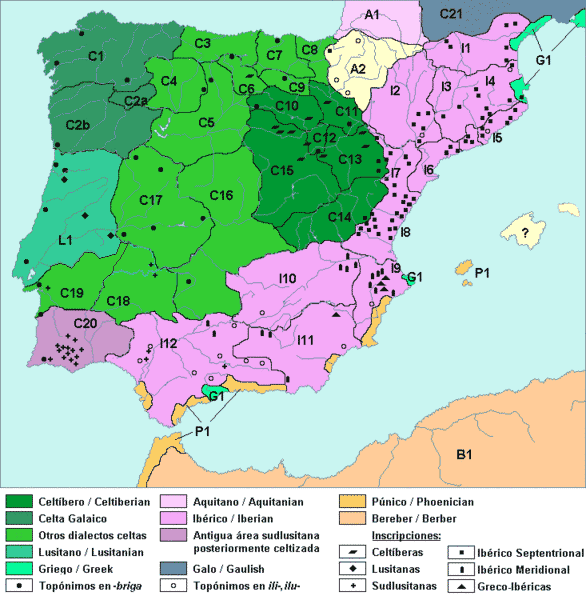
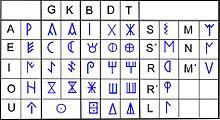
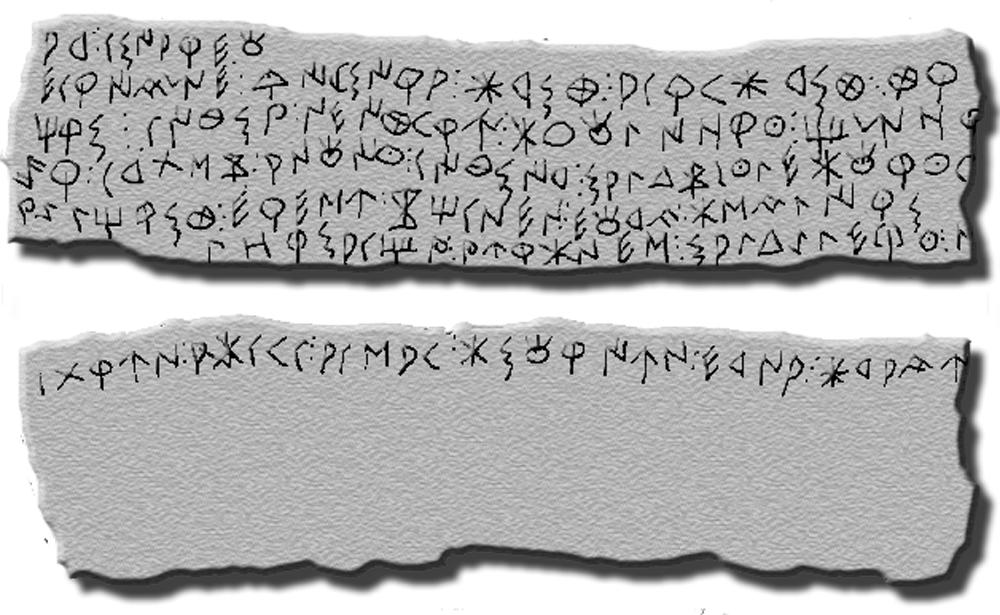
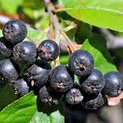
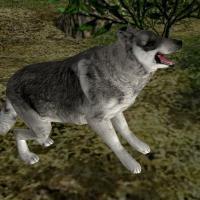

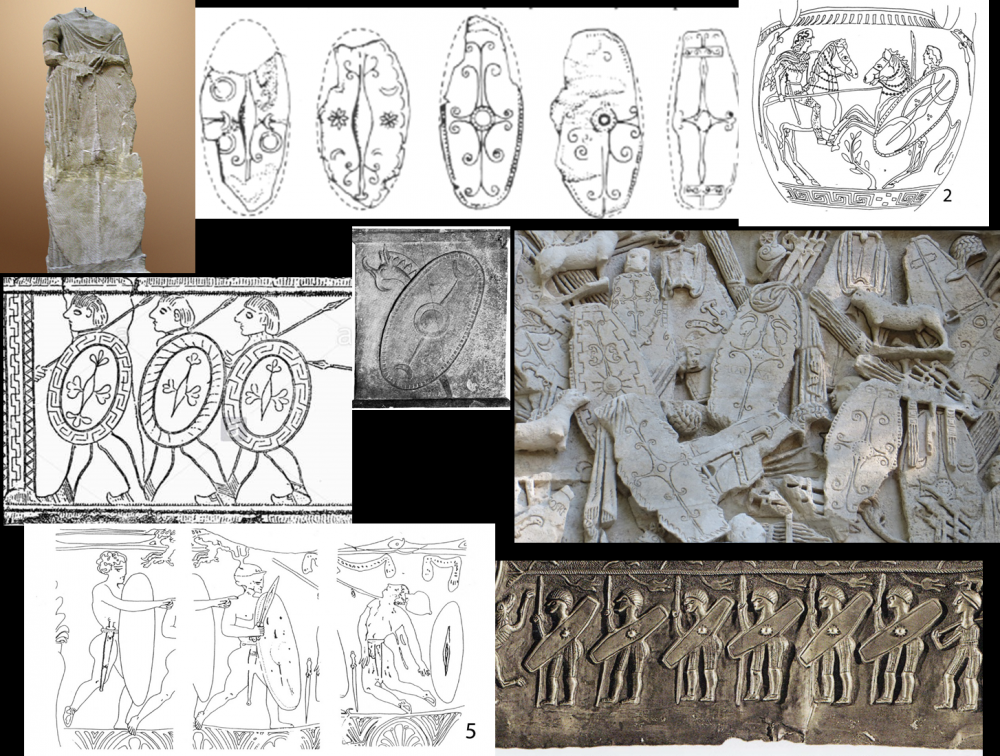
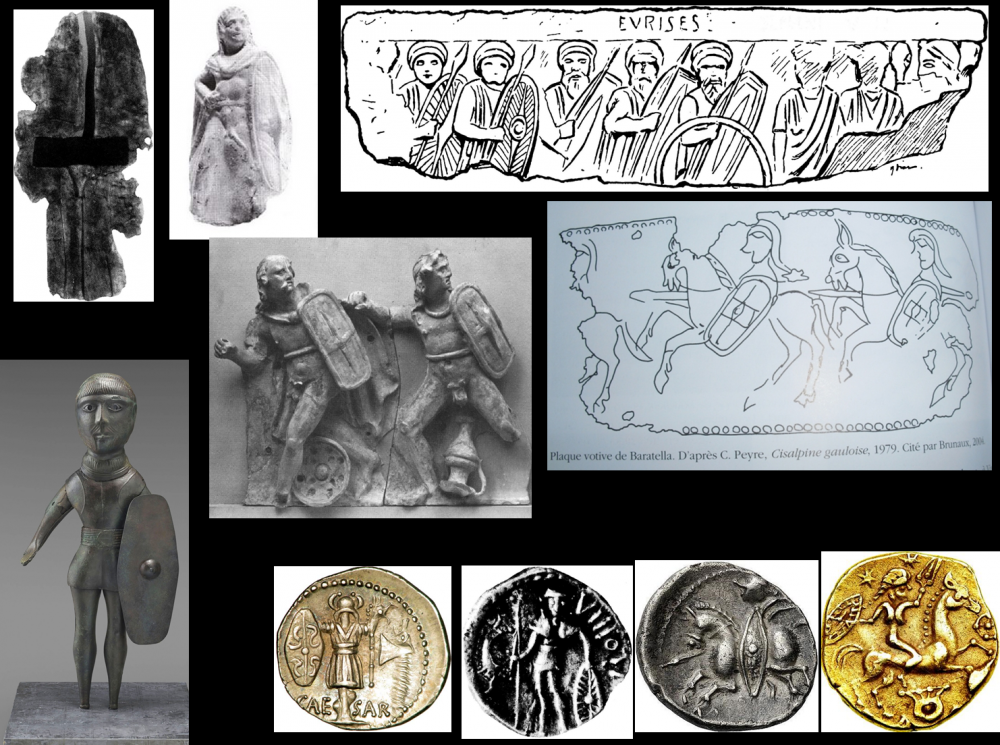

.thumb.png.ce58cea22940c255f5b0a735d5abee36.png)
